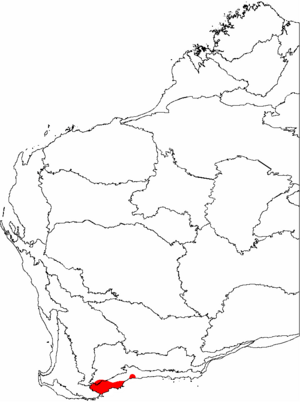Dryandra ser. Plumosae facts for kids
Dryandra ser. Plumosae was a way scientists used to group certain plants. It was part of a larger group called Dryandra, which is now known as Banksia ser. Dryandra. This specific grouping, Dryandra ser. Plumosae, was first described by a scientist named Alex George in 1996. However, in 2007, two other scientists, Austin Mast and Kevin Thiele, changed how these plants were classified. They decided that Dryandra plants should actually be part of the Banksia group, which meant the old Dryandra ser. Plumosae grouping was no longer used.
How it Was Grouped
In 1996, Alex George published his ideas on how to classify Dryandra plants. He named this group Dryandra ser. Plumosae after one of the plants in it, called D. plumosa (which is now known as Banksia plumosa).
This group included three types of plants:
- D. plumosa (now Banksia plumosa)
- D. pseudoplumosa (now Banksia pseudoplumosa)
- D. montana (now Banksia montana)
All these plants are dense, bushy shrubs. They don't have a special woody lump at their base called a lignotuber, which helps some plants regrow after fire. They also have long hairs on their stems and around their flower heads. These three species only grow in a specific area of Western Australia, between the Stirling Range and the Fitzgerald River region.

Why the Grouping Changed
Since 1998, a scientist named Austin Mast has been studying the DNA of these plants. DNA is like a plant's instruction manual, and by looking at it, scientists can understand how different plants are related.
Mast's studies showed that the Dryandra plants actually grew from within the Banksia group. This meant that Banksia wasn't a complete group without including Dryandra. Because of this new information, in 2007, Mast and Kevin Thiele decided to combine Dryandra into Banksia. They made Dryandra a series within Banksia, calling it B. ser. Dryandra.
This change meant that Alex George's older way of grouping Dryandra plants, including D. ser. Plumosae, was no longer used by scientists. Mast and Thiele plan to create a full new classification system once they have finished studying the DNA of all Dryandra plants.

